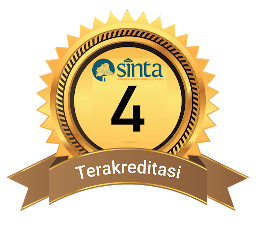The Effect Of Application The Discovery Learning Model Assisted By Handouts For Creative Thinking Ability And Chemical Learning Outcomes Of Students
DOI:
10.29303/cep.v7i2.6069Published:
2024-12-04Issue:
Vol. 7 No. 2 (2024): Edisi NovemberKeywords:
Guided Discovery Learning, Handouts, creative thinking ability, learning outcomesArticles
Downloads
How to Cite
Abstract
This research aimed to investigate the effecf of discovery learning model assisted by handout to creative thinking ability and chemistry learning
outcomes of X class science students of SMAN 4 Mataram. This research used quasi-experimental research design with pre-test and post-test Control Group Design. The population in research include all of X grade students of IPA SMA Negeri 4 Mataram, were 143 people that distributed into 4 classes IPA. Sampling technique used was purposive sampling. The samples in this research was X IPA 1 as an experimental class and X IPA 2 as a control class. In experiment class was given treatment using the discovery learning model assisted by handout, on control class was given using conventional learning model. The instrument used was a descriptions test. Hypothesis tested in this study uses t-test on the analysis of creative thinking ability with statistical test results at a significant level of 5% indicated tcount (4,850) > ttable (1,669) which means that H0 is rejected and Ha is accepted and Mann Whitney U-test on the results analysis chemistry learning with statistical test results at a significant level of 5% shows Zcount (4.13) > Ztable (1,645) which means that H0 is rejected and Ha is accepted. Based on the results of the statistical tests of the two sample classes, it was found that the learning of discovery learning models assisted by handout had a positive influence on the ability to think creatively and the results of chemistry learning in class X science students of SMA Negeri 4 Mataram. Based on the results of observations of student learning activities discovery learning models assisted by handouts have a positive impact in increasing student activity during the chemistry learning process in class X science students of SMA Negeri 4 Mataram.
References
Indriasih, A. 2015. Pemanfaatan Alat Permainan Edukatif Ular Tangga dalam Penerapan Pembelajaran Tematik. Jurnal Pendidikan. 16(2): 1-15.
Jannah, Rizkia M. 2018. Hubungan Kemampuan Berpikir Kreatif Siswa dengan Hasil Belajar IPA Siswa Kelas IV MI Raudhatul Jannah Jakarta. Skripsi UIN Syarif Hidayatullah Jakarta.
Lakiastuti, Fitri dan Muliawan. 2012. Statistika Non Parametris. Yogyakarta: CAPS.
Permendikbud. 2014. Peraturan Menteri Pendidikan dan Kebudayaan Republik Indonesia Nomor 59 Tahun 2014 Tentang Kurikulum 2013 Sekolah Menengah Atas/Madrasah Aliyah. Jakarta: Departemen Pendidikan dan Kebudayaan.
Sugiyono. 2017. Statistika untuk Penelitian. Bandung: Alfabeta.
Uswatun, Syifa, Lovi. 2018. Pengaruh Penggunaan Handout Berbasis Pemecahan Masalah Terhadap Keterampilan Berpikir Kritis dan Keterampilan Berpikir Kreatif Siswa. Jurnal Pengkajian Ilmu dan Pembelajaran. 6 (1) : 38-45.
Author Biographies
Ika Kurnia Rara Saputri, Program Studi Pendidikan Kimia, FKIP, Universitas Mataram
Muntari Muntari, Program Studi Pendidikan Kimia, Universitas Mataram. Mataram, Indonesia
License
Copyright (c) 2024 Ika Kurnia Rara Saputri, Sukib Sukib, Muntari Muntari

This work is licensed under a Creative Commons Attribution-ShareAlike 4.0 International License.
Authors who publish with Chemistry Education Practice agree to the following terms:
- Authors retain copyright and grant the journal right of first publication with the work simultaneously licensed under a Creative Commons Attribution License 4.0 International License (CC-BY-SA License). This license allows authors to use all articles, data sets, graphics, and appendices in data mining applications, search engines, web sites, blogs, and other platforms by providing an appropriate reference. The journal allows the author(s) to hold the copyright without restrictions and will retain publishing rights without restrictions.
- Authors are able to enter into separate, additional contractual arrangements for the non-exclusive distribution of the journal's published version of the work (e.g., post it to an institutional repository or publish it in a book), with an acknowledgement of its initial publication in Chemistry Education Practice.
- Authors are permitted and encouraged to post their work online (e.g., in institutional repositories or on their website) prior to and during the submission process, as it can lead to productive exchanges, as well as earlier and greater citation of published work (See The Effect of Open Access).






